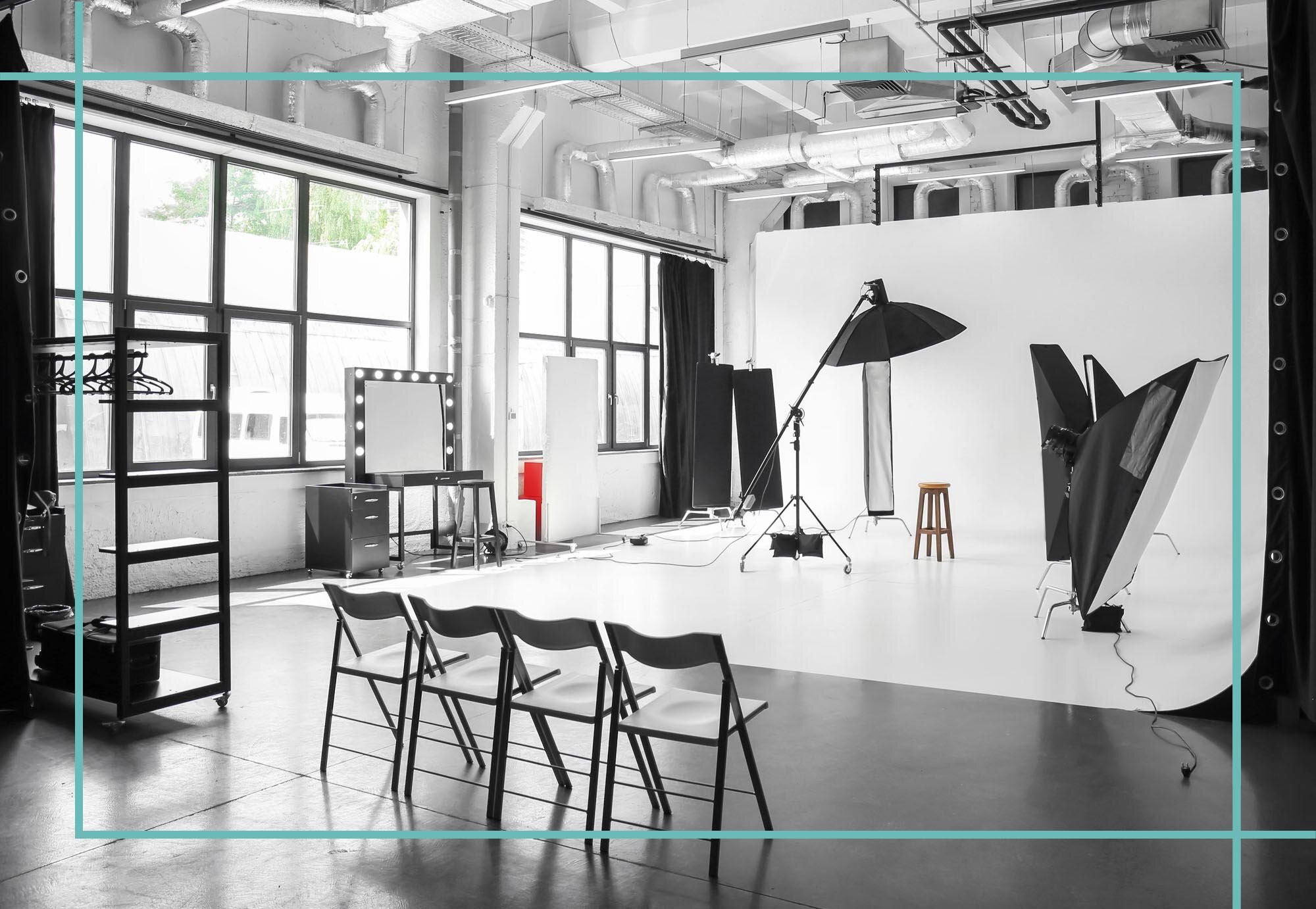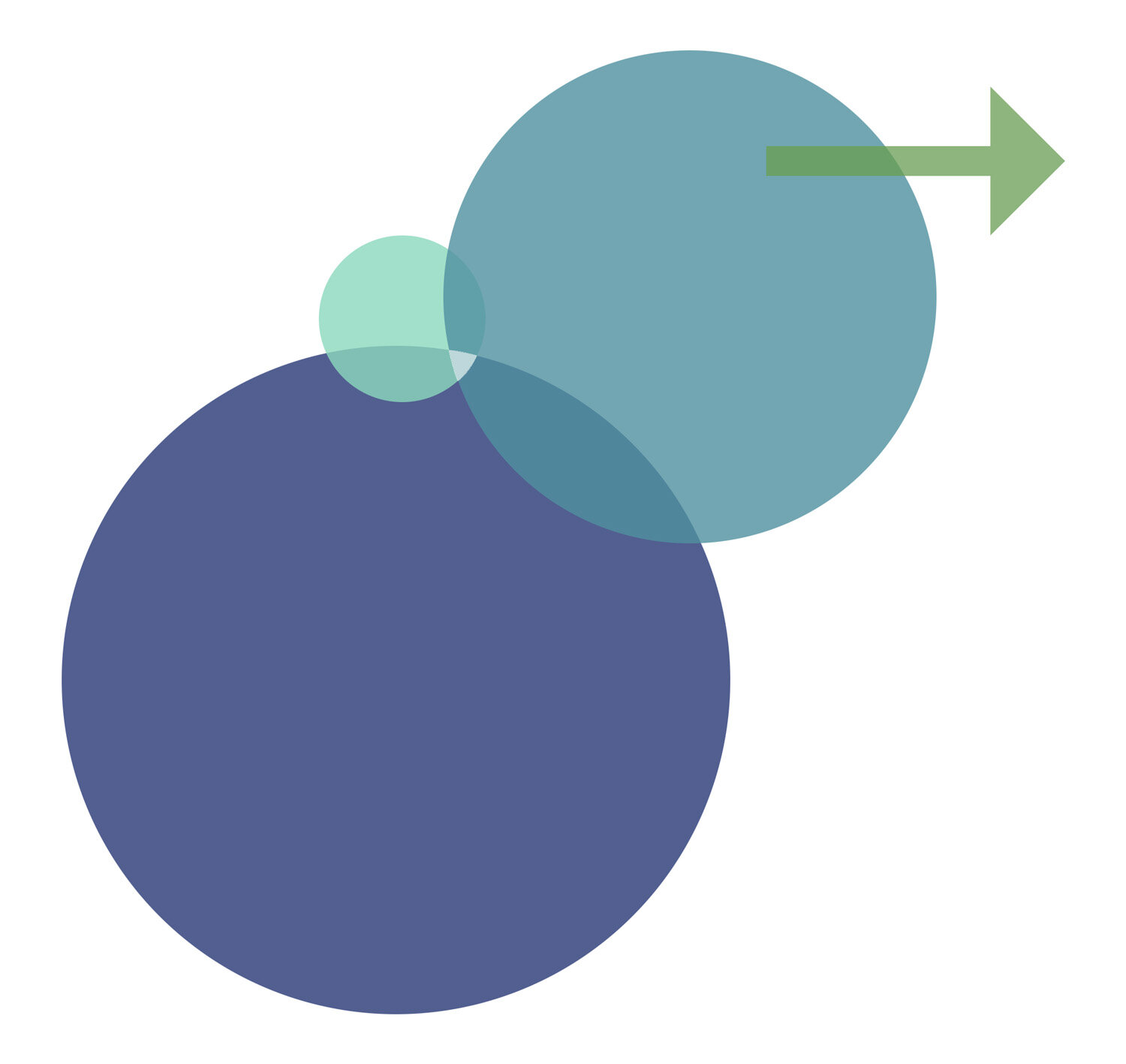Content Strategy for Photography Businesses & Organizations

This is a webinar I did with ASMP Executive Director Thomas Kennedy on April 29, 2020 based on a speaking presentation I did for ASMP CT at Yale University on October 10, 2019.
The Four Key Parts To The Content Your Audience Needs, How To Show It, & Why
WHY YOU
WHY THEM
THE GAP
YOUR GOODS
CONCLUSION

Adobe Stock
Contents
This material has evolved over the years from my work with photographers, creatives, small business, and learning. It is a work in progress. The content below is presented similarly to the webinar I did with ASMP Executive Director Thomas Kennedy on April 29, 2020 and a speaking presentation I did for ASMP CT at Yale University on October 10, 2019.
I sincerely hope you find the subject matter I cover in this website helpful. However it should be noted that I, Cameron Sterling, am not using it to render you, the reader, professional services tailored to your specific situation, nor is it a substitute for my professional consulting services. The information is presented here for conversations tailored to unique cases.
ASMP CT, Yale University, October 10, 2019, Room photo by Asher Almonacy, Display photo by Scott Indermaur
The Four Key Parts To The Content Your Audience Needs, How To Show It, & Why
WHY YOU
Your Pitch
Your Brand Story
Your Philosophy
WHY THEM
Your Client Profiles
Your Services & Packages
FAQ’s
THE GAP
Risk
Calls To Action
Marketing
YOUR GOODS
Images
Galleries
Image Trends
CONCLUSION
Set Yourself Apart & Say Why

Introduction
I created this presentation to help photography businesses with their content strategy. As a professional photography business, you serve your client or customer by consistently delivering on the expectations your brand projects.
You are in business to solve someone's problem and to offer a transformative solution that is unique to your abilities, interests, and market.
You are a business person who uses photography as a tool to do business. Photography is your method of delivering a transformation, and that transformation is something people want and will pay for.
However, unless you can identify and articulate what that transformation is that your client or customer wants, and unless you can build a business that enables you to deliver this transformation effectively and consistently to the right people in a dynamic partnership then you do not have a business.
What is it about your business that makes it uniquely able to solve your ideal client’s problem? It’s your images, your brand story, your process, and your commitment to your business that differentiates you.
What is it about your business that makes your solution the same as your client’s other options? These are the things that make you seem familiar, safe, and potentially a forgettable commodity.
Your skills and techniques keep your solution up to date, but this is simply your starting point. To keep momentum you need to know why your process works so you can adjust your content strategy as needed.
The dream of the photographer you want to be may not be commercially viable, so having a grasp of your market, sunk costs, and continually moving forward is essential.
I’ve presented the ideas here as succinctly as possible, explaining some parts more than others. Developing and implementing content strategy for your business takes focused work. This is where I like to begin helping my clients with their goals.
Mindset ~ Fixed or Growth
初心
Shoshin, Beginner’s Mind, An Attitude of Openness

Why Is A Website Important?
People may hear about you by referral or Social Media, but they go to your website to learn more.
When you get a recommendation, the first thing you do is Google it.
WHEN THEY GET TO YOUR WEBSITE
You only have a few seconds to make an impact.
They need to be convinced you have a solution to their problem.
If it doesn’t - they leave.
A website with more noise than signal bounce leads just as much as one too minimal that does not provide context to your signal.
A WEBSITE ONLY DISPLAYING IMAGES & BASIC INFORMATION IS THE PAST
A website today is your primary tool to motivate leads.
The difference between a portfolio website & one that helps people become happy clients is...
…it inspires your ideal clients to take action.
THE WAY YOU CAN DO THIS IS
Put positioning copy (what you do, for whom, USP) on every page.
Clear calls to action - What you want the visitor to do next.
Go to a specific page, contact you?
Show Testimonials & examples of work - not limited to galleries
WHAT PAGES DO YOU NEED?
These are a few ideas. Use images and design on each page.
Home
About (your brand story)
Work Examples (galleries for each congruent market type)
Contact (your most important call to action moment)
Services / Packages
FAQ
Testimonials
Blog or articles (text helps SEO, social sharing, know - like - trust - remember)
Philosophy (your why)
PEOPLE SCAN WEBSITES
For information that’s brief and relevant.
As people scroll you can use more words.
Give more text when people are ready for it.
WHY YOU?
What is unique and the same about your offer? How do you talk about and show how this benefits the people who want your services?
You need to identify your niche, stand out in your marketplace, and minimize your clients risk perceptions.
Let’s get started!

Your Home Page Pitch
Adobe Stock
THE HOME PAGE
This is your store-front.
Your home page sets the tone – both visually and with language.
It helps your audience quickly understand & self-select your offer.
THE PITCH
What is different & what is the same about your offer?
What are the benefits of your business?
Identify your niche.
YOUR ABOVE THE SCROLL LINE OFFER
Distill what you do for your ideal clients into one sentence.
The first images & text you see before scrolling down.
This message is easy to understand & customer-centric.
If you don’t say it you loose control of your brand narrative.
DESCRIBE
Who you work with.
What you’ll do for them.
What results they will get.
Don’t make your audience work to understand why they need you.
DO NOT SAY
Why you’re better
Your awards
10 other things you do
Discounts & Special offers
These things don't make much difference here in their journey.
YOU USE A VERSION OF IT IN
The About section of your website
Your social profiles
New client emails
Introductions
BELOW THE SCROLL LINE PITCH TEXT
Go into a little more detail in a brief paragraph.
How do your clients get started?
What it’s like to work with you is important but secondary at this point.
SEO BEST PRACTICE
Search engines pick up on this text.
Use your SEO keywords.
Cameron Sterling
WHAT IS YOUR OFFER’S VALUE?
Bain research identified 30 elements of value for consumers across four categories. Elements at the bottom of the pyramid meet functional needs and become more personal and emotional at the top. Which ones do you offer? Which ones do your clients need?
Bain & Company

Your Brand Story
Adobe Stock
ABOUT ME
This is where your audience learns about you.
But in the context of what you can do for them.
It’s really, about why they should feel compelled to work with you.
People buy from people or brands they know, like, and trust.
Share Your Brand Story To Build Emotion With Your Audience
Your about page should not be a series of events.
YOUR BUSINESS BRAND STORY IS
A key part of your marketing materials.
It sets you apart.
It helps people relate & align with your values.
What part of your story do you have in common with your audience?
STATUS ALIGNMENT
A lead is more receptive when they feel they’re on the same level.
You have key experiences in common.
Your lead sees you understand who they are, & how you fit into their world.
HERE’S WHAT I DID AND ACCOMPLISHED
To get good.
To earn your attention.
& Why you should consider my solution to your problem.
Adobe Stock
INCLUDE WHAT OR WHO GAVE YOU
Confidence
Tools
Skills
Drive
-to do what you do.
Adobe Stock
STORIES ARE THE VEHICLE WE
Connect.
Create meaning.
Share values.
Share ideas.
STORIES HAVE THE POWER TO
Move us emotionally.
Entertain us.
Inspire your tribe.
Adobe Stock
HIGHLIGHTS, TENSION, & DRAMA
Put together the best parts of the story for your audience.
You are the hero of this story.
Use real moments of tension & relief
This helps the audience to care about you & your brand.
Stocksy
YOU ARE AN IMAGE EXPERT
Use a photo of your self!
Use a professional portrait that conveys “professional.”
Let your personality differentiate & shine in your portrait.

Philosophy
Adobe Stock
WHY YOUR WORK MATTERS TO YOUR CLIENTS
This is not a bio.
This is Why do you do what you do.
This is why you do it the way you do.
This is why your business matters to your clients.
Why Them?
Who are your ideal clients? What do they struggle with or aspire to? What do they need right now? Knowing who your ideal client is creates a clarity that helps you direct your message.
This message shows them how working with your unique business with will benefit them towards their challenges and aspirations.

Who is Your Ideal Client?
Stocksy
WHO IS YOUR IDEAL CLIENT?
Stocksy
This is your market avatar, the audience you are speaking too.
This helps you make a clear message about how working with you will solve their problem.
DO YOU SPECIALIZE?
On a specific type of client with a range of services?
On a specific kind of service with a range of client types?
PEOPLE LOOK FOR
A specialist
Or at least an expert
Who can solve a specific problem quickly and effectively
With low risk and high reward
WHAT DO YOU KNOW ABOUT YOUR IDEAL CLIENT?
What benefits do they get from working with you?
Who are they individually?
What are their challenges & aspirations?
What do they think they need? & What do they really need?
WHERE ARE THEY ON THE ROGERS DIFFUSION CURVE?
INNOVATOR
EARLY ADOPTER
EARLY MAJORITY
LATE MAJORITY
LAGGARDS
HOW DO THEY LIKE TO PURCHASE SERVICES?
What has changed with COVID-19?
Research their past projects for purchasing patterns.
Seasonally or yearly for campaigns or projects?
Through an agency, rep, or directly with you?

Services & Packages
Services and packages enable your audience to quickly see your solution to their problem.
WHAT SERVICES DO YOU BEST PROVIDE?
Stocksy
What are you exceptionally talented at?
What services do you enjoy providing?
How do you offer added value outside of deliverables?
SERVICE TYPES HELP YOUR CLIENTS
Quickly understand what you do & how it benefits them
See themselves & their challenges in your offer
Quickly identify which is best for them
SERVICE TYPES HELP YOU
Tailor services to meet your clients’ needs
Create services around your skills, interests & market opportunities
Pre qualify clients
Communicate what you offer & how people can work with you
Charge higher rates for specialized services

FAQs
Adobe Stock
THE FAQ SECTION
Whether you work with experienced buyers or people who rarely buy your service, an FAQ page will help you and them.
WHAT IT DOES ON THE SURFACE
Answer questions & objections you know they have
Answers questions before you talk
Gives you a place to explain how you work
This isn’t a contract, it’s a conversation
WHAT IT DOES UNDER THE SURFACE
Guides the type of questions
Shows your an expert with experience
Shows you have empathy for their perspective
Shows them industry norms
Adobe Stock
WHAT ARE FAQS
What are your boundaries, nights & weekends?
Why do you specialize
Do you work alone
Pre & Post production services
Payments
Safety on set
The Gap

RISK
Stocksy
CONVERSION WORKS WHEN
You apply empathy for your audience by delivering your message to a specific person, in an appropriate medium, time & place.
You’re leading them to a destination they truly need.
They take a risk & trust you will deliver on an expectation.
Stocksy
TRUST
Trust is part of being a compelling brand.
A compelling brand is true to its brand story & doesn’t deviate.
Trust is when you demonstrate you know the overlap of what you want & what your client wants.
Trust is when you show who you are & make an emotional connection.
Trust comes from helping your client make an informed decision.
Trust is not about being liked…
…it’s about being the right choice for the client’s problem.
A BRAND IS AN EXPECTATION OF AN EXPERIENCE.
The buyer's risk tolerance determines if they act on their belief that the offer will meet expectations.
The brand then becomes a delivery on a promise.
People trust brands that deliver predictably on promises.
THE RISK GAP
Every decision we face factors in uncertainty.
We like routines & familiar things because there’s certainty & efficiency.
When your mind wants certainty,
But your intuition knows the odds are not certain,
You experience a risk gap & back away.
TO REDUCE BUYER’S RISK
Show you’re an expert at the problem they need solved.
First, identity the problem they need solved.
Take a point of view.
& Offer a thoughtful solution to their problem, treatments & case studies
BUYER’S RISK REDUCTION IS A JOURNEY THROUGH YOUR CONTENT
This is your lead’s journey through your website.
This is your concise & purposeful image gallery sequence.
This is a case study you write & post on social media.
This is how you solved a problem & what the outcome was.
Cameron Sterling
NOVELTY & YOUR U.S.P.
Novelty produces intrigue & avoidance.
Avoidance is not going to help you get business.
New & different things attract attention quicker.
However this can trigger anxiety.
The desire for safer familiar choices often wins over novelty.
PEOPLE WANT
Products & services proven to work.
Solutions that align with their values.
Or Solutions that confirm their membership in a tribe.
The bigger a decision is the more likely one is to be risk averse.
EARLY ADOPTERS
Try unproven products, services, - like new photographers.
They take greater risks on new ideas & ways of working.
They take pride in this tribe.
Indie publications & small brands fit in this category.
NOVELTY Vs. FAMILIAR
Your USP is normal in every way except for one key difference.
Show the buyer why this one key thing is the new standard.
Look at Apple & their newest media ports!
RISK TOLERANCE
Everyone has a different tolerance for risk - novelty
Go past this point & people back off - anxiety takes over.
People add up risks - not just how big they are.
DEFINE THE RISKS FOR THEM IN YOUR FAQ & PITCH PARAGRAPH
Explain the things you know are novel or scary about your offer.
Talk about the familiar aspects of your offer.
Explain how the status quo is over.
Then explain why your USP is better.
& becoming the new normal.
Stocksy
TESTIMONIALS
Testimonials are social proof & reduce buyer’s risk.
Social proof is more powerful than what we say about ourselves.
Testimonials show a happy ending to the story of working with you.

CTAs
Cameron Sterling
CALLS TO ACTION
The purpose of your website is to create calls to action.
Your business serves customers, but…
Your business also needs to stay in business to do this.
CTAs ARE LIKE STONES TO CROSS A RIVER.
BUTTONS LIKE “LEARN MORE” ARE WAY FINDING
THEY HELP PEOPLE KNOW WHERE TO GO NEXT.
CTAs IN ALL SHAPES & SIZES
Learn about your services?
Schedule a call?
Opt-in to your mailing list?
Go to pages on your site?
Social media buttons
Cameron Sterling
KEY PLACES TO PUT A CALLS TO ACTION
These are located on the path of your pitch.
Top right of your website
Center of the screen above scroll line
Footer
People scan for prompts to take action.
If you don’t ask people to act - they won’t.
On every page, invite the viewer to take the a step towards working with you.
TRANSITIONAL CTAs
Ask them to spend more time with you.
Opt-Ins -> A simple downloadable pdf document
Articles
Podcasts
Zoom meetings

Marketing
Adobe Stock
Marketing Types
Brand Marketing
Direct Marketing
Content Marketing
Native Advertising
Guerilla Marketing
WHAT’S THE OBJECTIVE?
Audience growth?
To drive a conversion moment?
Lead building?
To move people to the next step in the journey?
Adobe Stock
BE YOU
It’s ok to model to learn, but this doesn’t mean it will work for you.
It’s got to be consistent with your brand’s voice on all social platforms.
This creates a connection based on your strengths that build trust.
CREATE A CALENDAR
Consistency drives trust - Show Up!
Provide valuable content 80% & CTAs 20%
LEAD TO THE NEXT STEP
Your content needs to lead people to the next step.
What is the outcome you want to achieve?
CONGRUENCY OF YOUR CONTENT
This is how things appear across your website and social platforms.
Know and adapt your voice.
Know your audience on each platform.
Know what they are looking for on each platform.
STAYING IN TOUCH In COVID-19 Times
Social media
Newsletters
Articles
Build a network of quality connections - not a huge following.
Adobe Stock
ARTICLES & VIDEOS
Google likes original content.
Google likes 3-5 keywords in your content.
Google doesn’t like too many keywords.
Article marketing distributes content far & wide.
Adobe Stock
WHAT IS YOUR SOCIAL CONTENT’S VALUE?
Informative
Inspirational
Entertaining
A Call To Action
It’s a real time information network & a history of your brand.
Promote your offer.
Grow your email lists.
Contact people directly with comments & messages.
Adobe Stock
GROW YOUR NETWORK
New Vs. Existing
#’s @‘s Comments
Engage with your current followers.
This boosts your visibility.
-> Which attracts more audience.
SHARE YOUR BRAND STORY MOMENTS
Share personal stories that make you a compelling person.
Your brand story helps your audience fit you into their world.
Stocksy
GO BEHIND THE SCENES
Share personal stories that make you a compelling person.
Your brand story helps your audience fit you into their world.
SHARE YOUR RESOURCES
Connect through giving.
Share your favorite resources.
Something you've learned recently.
REMEMBER
The market - who you are talking with
The message - what you are saying
The medium - where you are saying it
& Love on your clients.
Your Goods

Your Images & What They Can Do
Adobe Stock
WORDS ARE IMPORTANT, BUT
Before words reach our brains,
Images have crossed the finish line
& are stirring up emotions.
Adobe Stock
WHY IS THIS IMPORTANT?
Images are the first thing your audience takes in.
The signal is always on.
The message will sink in more than words.
REMEMBER
What does your audience need to know about your work?
What is their problem?
What do they stand to gain or lose?
What does this happy place look like?
Adobe Stock
Cameron Sterling
YOUR PHOTOGRAPHIC IDENTITY IS
The type of images you like to make - your authentic self.
The type of images you are skilled at making.
The type of images the marketplace needs.
Emphasize work you want to do.
Show where you want to go, not where you’ve been.
OWN YOUR AUTHENTIC
Camera work style
Digital post production Style
Narrative
TO BE A PHOTO BRAND
Your values can’t change to make a buyer happy.
If you change your Styles & Specialties easily or incongruently…
The buyer becomes confused & uncertain who you are & what they get.
The buyer’s risk grows.
Consistent values & style create a memorable compelling brand.

GALLERIES
YOUR REVENUE STREAMS
Squarespace
Think of galleries as revenue streams.
Businesses need to clearly communicate what they do.
Incongruent revenue streams create brand confusion.
Identify a message that unifies your revenue streams.
Make sure it’s obvious & fills a need.
Use gallery names that are intuitive.
WAYS TO SHOWCASE WORK
Client
Category
Project
Case study
Show you have a consistent vision.
MAKE IT EASY
To see an overview
No clicking
30-40 images
3 to 6 galleries
ONLY SHOW
What is relevant to your audience.
What you need to demonstrate that you are capable.
Consistency instills confidence, but redundancy bores.
“You can’t see the label from inside the bottle.”
Get professional help, most professionals operating at high levels have at least one consultant, coach, or mentor.
Adobe Stock
Adobe Stock

Visual Trends
Cameron Sterling
Identify and anticipate the content customers need using research.
METHODS
QUANTITATIVE DATA - What’s happened, measured facts
Trend Reports
Yearly Retail And Consumer Trends
Traditions
QUALITATIVE PATTERNS - What's happening now, observed not measured
Adobe Stock
Stock Site Searches
Brand shifts
Movies, Music, Magazines, Advertisements
Pantone Colors
Travel locations & methods
Lifestyle changes
Design Communities - Behance
Technology norms changes
Societal changes
Conclusion

SET YOURSELF APART & SAY WHY
Stocksy
When photographers get started they sometimes play it safe.
They learn the rules & then bend them to find their voice.
This is a natural progression, we all learn from example.
We often see how others succeed & model this.
You then grow, learn the business, & start to create work that matters.
You discover your Unique Selling Point & learn how to use it.
When you embrace this mindset, competition is about being what’s best for the client, not being better or cheaper than peers.
You are really selling what your brand stand stands for.
Cameron Sterling




















































